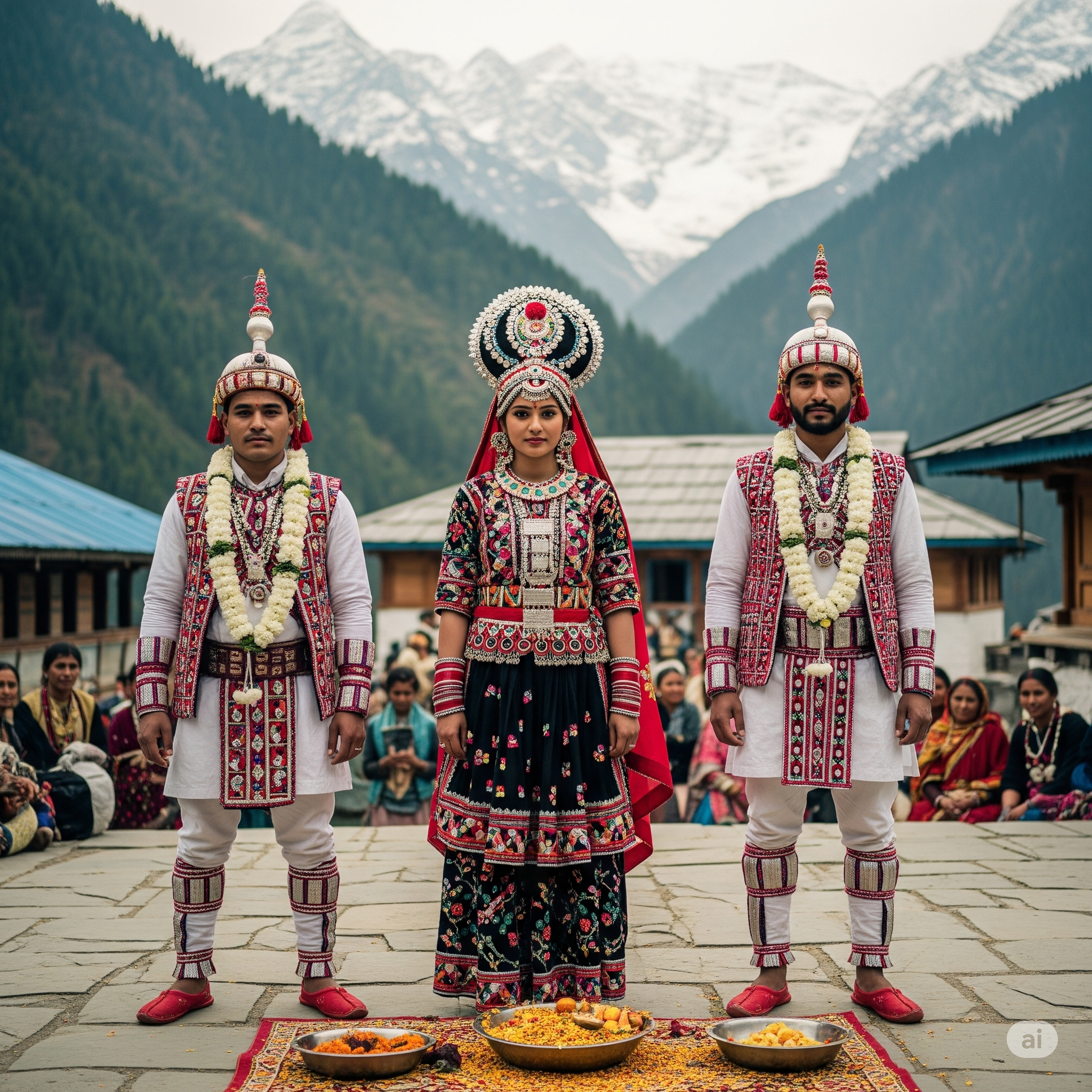The Hatti tribe, one of the most fascinating and culturally rich tribal communities of India, resides primarily in the Trans-Giri region of Sirmaur district in southern Himachal Pradesh, along the border of Uttarakhand. The name “Hatti” is derived from the word ‘haat’ or local markets where the community historically traded goods like vegetables, meat, grains, and handmade products. Their name itself is a reminder of their age-old occupation as traders and agriculturists. With roots believed to go back over 500 years, the Hattis have maintained a strong sense of identity and social structure that continues to influence their way of life today.
Origins and Ancestry
The Hattis trace their lineage to Rajput and Kshatriya clans, and many still claim descent from warriors who migrated to the hilly terrain centuries ago. Historically isolated due to the rugged geography of the Shivalik Hills, the tribe developed distinct traditions, dialects (mostly a mix of Pahari and Jaunsari), and governance systems, including their own local panchayats known as ‘khund’. These panchayats govern community issues independently and have deep roots in customary law, making the tribe a semi-autonomous society even today.
Social Structure and Cultural Practices
One of the most striking aspects of Hatti culture is its strict caste system, which separates the community into upper and lower castes. Social practices like dining, marriage, and even religious functions are governed by these divisions, although modernity is gradually softening these boundaries.
Perhaps the most unusual and talked-about practice among the Hatti tribe is polyandry, where one woman marries multiple brothers—a custom still observed in remote areas, although fading with time. This practice, once rooted in the need to avoid division of ancestral land in the difficult mountain terrain, reflects the tribe’s deep connection with land and kinship.
The Hattis are also known for their elaborate festivals, vibrant folk music, traditional attire, and dances such as naati and thoda. Their weddings are large community events with rituals that last several days, filled with symbolic customs passed down through generations.
Economy and Modern Life
Agriculture remains the backbone of the Hatti economy, with wheat, barley, and maize being major crops. In recent decades, many have diversified into horticulture and government services. However, despite educational and economic improvements, the Hattis still fight for Scheduled Tribe (ST) status, which they believe is crucial for preserving their culture and gaining equal opportunities in education and employment. In 2022, their demand was fulfilled when the Indian government granted ST status to the Hatti community of Himachal Pradesh, recognizing their unique social and cultural identity officially.
Current Status and Challenges
Today, the Hatti tribe stands at a crossroads between tradition and modernity. While many younger members are moving to cities for education and work, elders continue to uphold centuries-old customs and values. The community is slowly adapting to change while trying to preserve its indigenous heritage, social harmony, and identity.
Conclusion
The Hatti tribe is more than just a group of people living in the hills of Himachal Pradesh—they are a living example of how deeply culture can shape community life. Their unique practices like polyandry, traditional panchayats, and vibrant cultural rituals make them an important part of India’s tribal diversity. As they move forward with ST recognition, the hope is that they will find a balance between embracing modern development and safeguarding their rich legacy.
Sunita Chauhan married two brothers in Himachal’s Shillai Village
